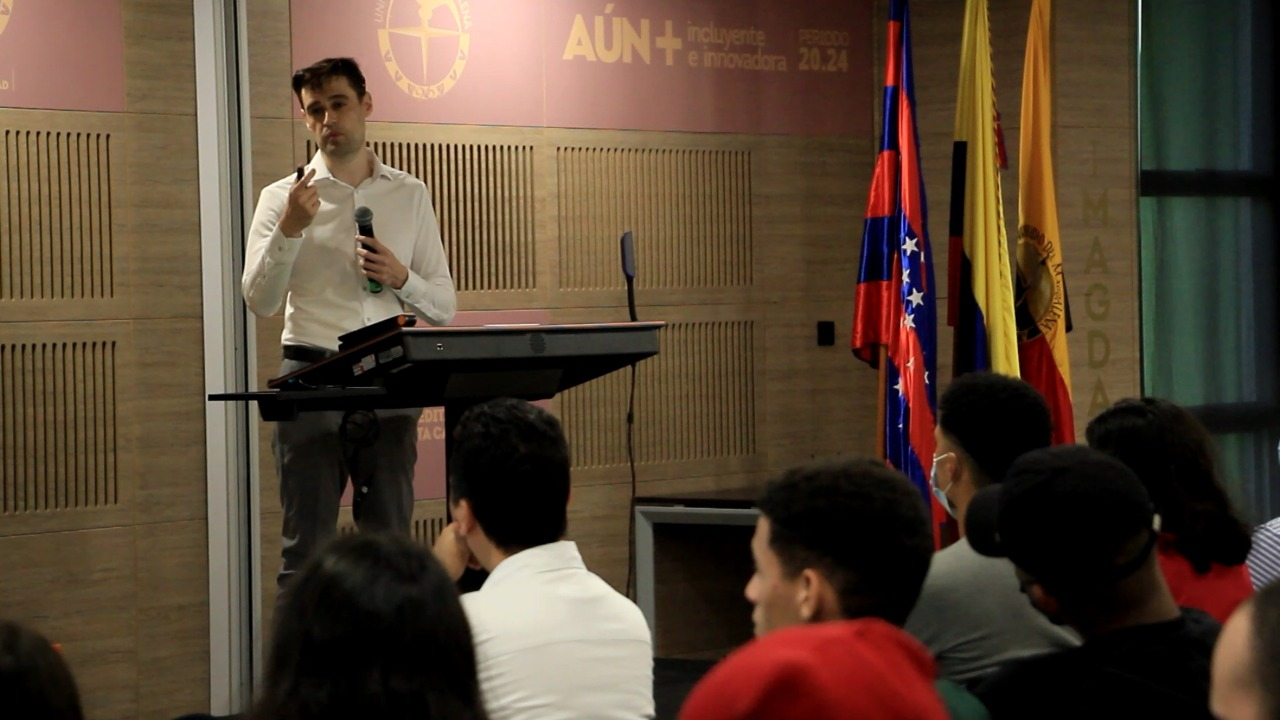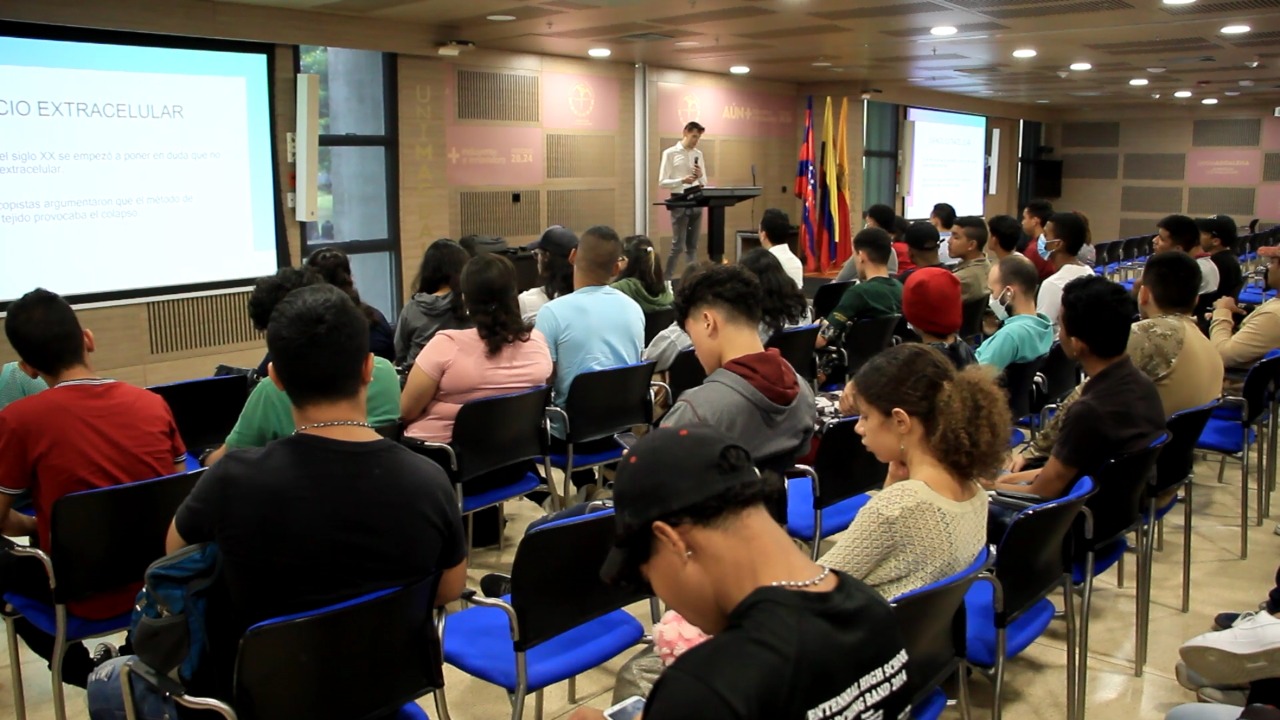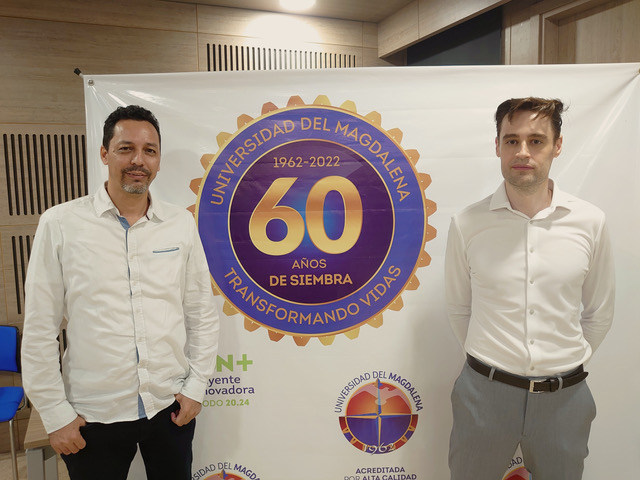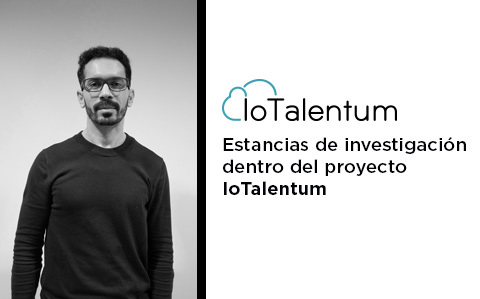Researcher Sergio Miguel Tomé, who is currently carrying out a Marie Curie Global Fellowship project, under the supervision of Juan Manuel Corchado at the BISITE Group, was invited to give a lecture at the CINSIS (The International Conference on Innovation in Systems Engineering) held annually by the University of Magdalena (Colombia), and on this occasion it was organised by the Women In Engineering UniMagdalena Affinity Group.
 Sergio Miguel Tomé during his presentation at CINSIS.
Sergio Miguel Tomé during his presentation at CINSIS.
The lecture given by Dr. Miguel Tomé was entitled "Computational Simulations for understanding the brain". In his lecture he highlighted the importance of brain research for our society and explained how computer science can help us to better understand the brain. He is currently developing a project that he presented to the European Union for the creation of a simulator that will aid in the investigation of the diffusion and transport of both endogenous and exogenous substances through the extracellular space. His project aims to develop a digital twin of the extracellular space. A digital twin is a copy of the real system that behaves exactly like the real system, so that it allows to study how the real system behaves.
Understanding the human brain
The extracellular space is the space between brain cells. This space is fundamental for the carrying out of four processes which are of great importance for the brain. The first function is in the ionic balance for the membrane potential. Changes in the volume of the extracellular space produce changes in ion concentration in the extracellular space which directly affects electrical signals in the brain.
The second function relates to volume transmission (a form of interneuron communication in which the neurotransmitter occupies a much larger volume than it does in synaptic transmission, resulting in communication that travels from one neuron to many). The third function for which the extracellular space is very important is the elimination of waste products that originate from brain cells. It is currently being studied whether the accumulation of beta-amyloid that occurs in Alzheimer's disease is related to problems in the clearance of the extracellular space. The fourth function is the release of neuropharmaceuticals in the brain.

While the functions of the extracellular space are very important for the proper functioning of the brain, many questions about its structure are still unknown. The physical scale of the extracellular space is on the order of tens of nanometers, which means that the investigation of the processes that occur and their structures cannot be done directly. For this reason, Dr. Miguel Tomé is trying to develop a computer simulator to help test the stated hypotheses.
Last year, Dr. Miguel Tomé was on a research stay in New York, in the laboratory of Dr. Sabina Hrabetova at SUNY Downstate, to learn and study how the extracellular space is investigated in vivo. During his stay, in addition to receiving training from Dr. Hrabetova, he also received mentoring from Dr. Charles Nicholson, one of the historic pioneers in the study of the extracellular space. Dr. Nicholson helped to develop 3D Brownian motion and the experimental methods used to measure extracellular space and its characteristics.
Performing a simulation of how substances move through the brain involves tackling the problem of the vast amount of resources that would be needed to do so. For example, finding the positions of 1mg molecules of benzodiazepines would require more than 28 million TB of RAM memory. Dr. Miguel Tomé's project consists in the development of a prototype simulator called HAPS (Hybrid advanced particles simulator). HAPS will implement a two-level hybrid architecture designed to overcome the barrier posed by the amount of RAM required for a direct simulation of the movement of molecules. The first level will perform a simulation of each particle, while the second level will use probability distributions to determine the motion of the particles.

In addition to the functions of the extracellular space of the brain and the techniques used to investigate it in vivo, Dr. Miguel Tomé explained in his lecture how he is developing HAPS, from the generation of Brownian motion to the importance of data structure for simulation efficiency.
Dr. Miguel Tomé's HESSP project (Hippocampus Extracellular Space Simulator Project) has received funding from the European Union's Horizon 2020 research and innovation program under funding agreement No. 898052.




